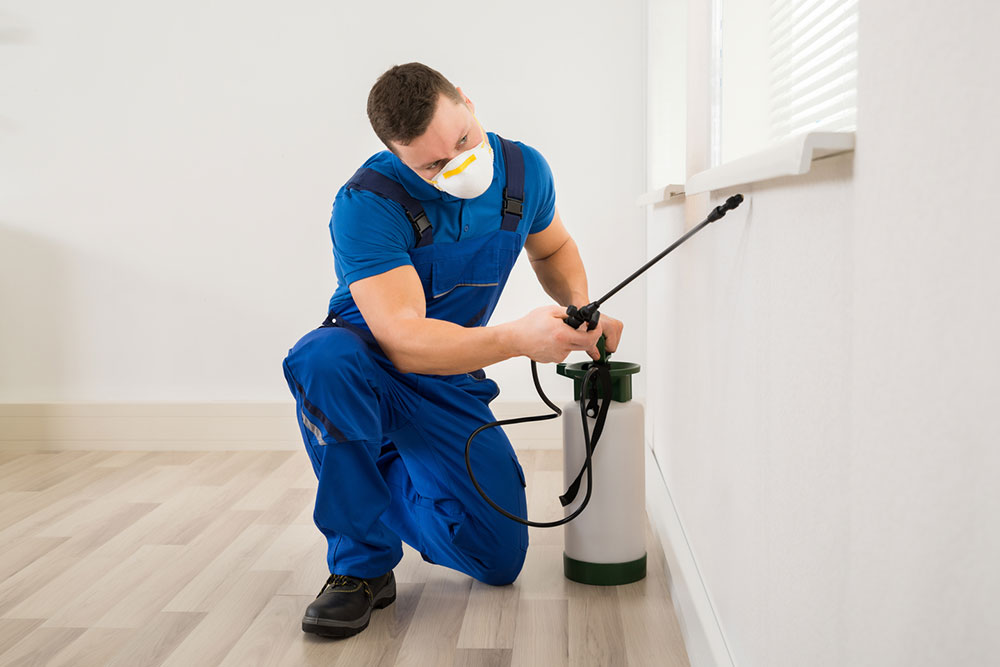7 common home pest control mistakes to avoid

Homeowners with a yard or outdoor space have to tackle unwanted pests frequently. Many use shortcuts to deal with the problems. But while some of these solutions can give a reprieve, most often worsen the infestation. Whether one wants to get rid of gnats or yellow jackets, some hacks can prolong the problem or cause the existing pests to move inside the home. Thus, here are 7 such home pest control mistakes to avoid.
Using DIY pest control sprays
In most cases, DIY home pest control sprays are not very effective. This is because homeowners are generally not experts in the effective handling and management of pesticide application. On the other hand, professional technicians have all the necessary training and expertise. They know how to get rid of pests effectively and prevent an infestation from occurring again.
Potting pest-repellent plants outdoors
Plants such as citronella plants, marigolds, lavender, lemon grass, mint, basil, rosemary, catnip, and garlic are quite popular natural pest repellents. These are generally effective in dealing with not severe problems such as keeping away chipmunks from the yard or flies on houseplants. But these are not at all effective when one has to deal with damaging pests or large-scale infestations. Such plants are quite weak compared to professional chemical alternatives.
Underestimating the extent of the infestation
This is a common mistake that many people make while trying to figure out what they are dealing with when it comes to pest infestations. In most cases, when one spots a couple of bugs or pests, it is just the tip of the iceberg. Most of these pests, especially rodents, termites, and ants, are really good at hiding. They can end up causing significant damage even before a homeowner starts noticing them. So, no matter how insignificant the pest issue seems, it is a mistake to underestimate the size of the infestation.
Not taking quick action
Pests and bugs multiply very quickly. Therefore, waiting around to take action before the infestation becomes unmanageable, even by professionals, is a mistake. Whether it is getting rid of spiders, ants, or ticks inside the house, action must be taken as soon as the first signs of infestation become visible. Timely intervention is crucial in order to minimize the damage and prevent the problem from getting more severe.
Not scheduling pest control efforts according to the season
During warmer months, pests, bugs, and insects are more active. This usually begins as soon as the spring season starts. Pest infestation is usually high during the summer months. As the temperature drops, some insects may start to die off. But some head indoors. Thus, it is important to schedule pest control outdoors as well as indoors, depending on the season, to prevent severe infestation.
Not using professional assistance
Not calling in professionals to manage the infestation is one of the biggest home pest control mistakes. While some pest control companies may seem expensive, most of them have several plans across different price points. These are based on the size of the home, degrees of infestation, type of pest, and type of pest control treatment required. Professionals have all the necessary expertise, training, tools, equipment, and chemicals that can get rid of pets for good. They take care to remove the problem at the root and seal off any gaps or openings that may cause pests to come back. Furthermore, professionally treating pest infestation helps prevent it from recurring in the future.
Ignoring preventive measure
One of the best ways to manage pest infestation is to prevent it from occurring at all. Many people assume that since they never have a pest problem, their house will never be infested. However, prevention is said to be always better than cure. So, one must take preventive measures regularly to lower the risk of pest infestation. Even if a home has been infested once, it always helps to follow preventive procedures yearly or half-yearly or, depending on the seasons, to prevent re-infestation. Some common preventive preventive measures include the following:
Sealing off gaps and entry points from where bugs and pests may come in
Keeping the house clean
Doing a deep clean of the house every quarter
Checking for water leakage and moisture issues and doing timely repairs









